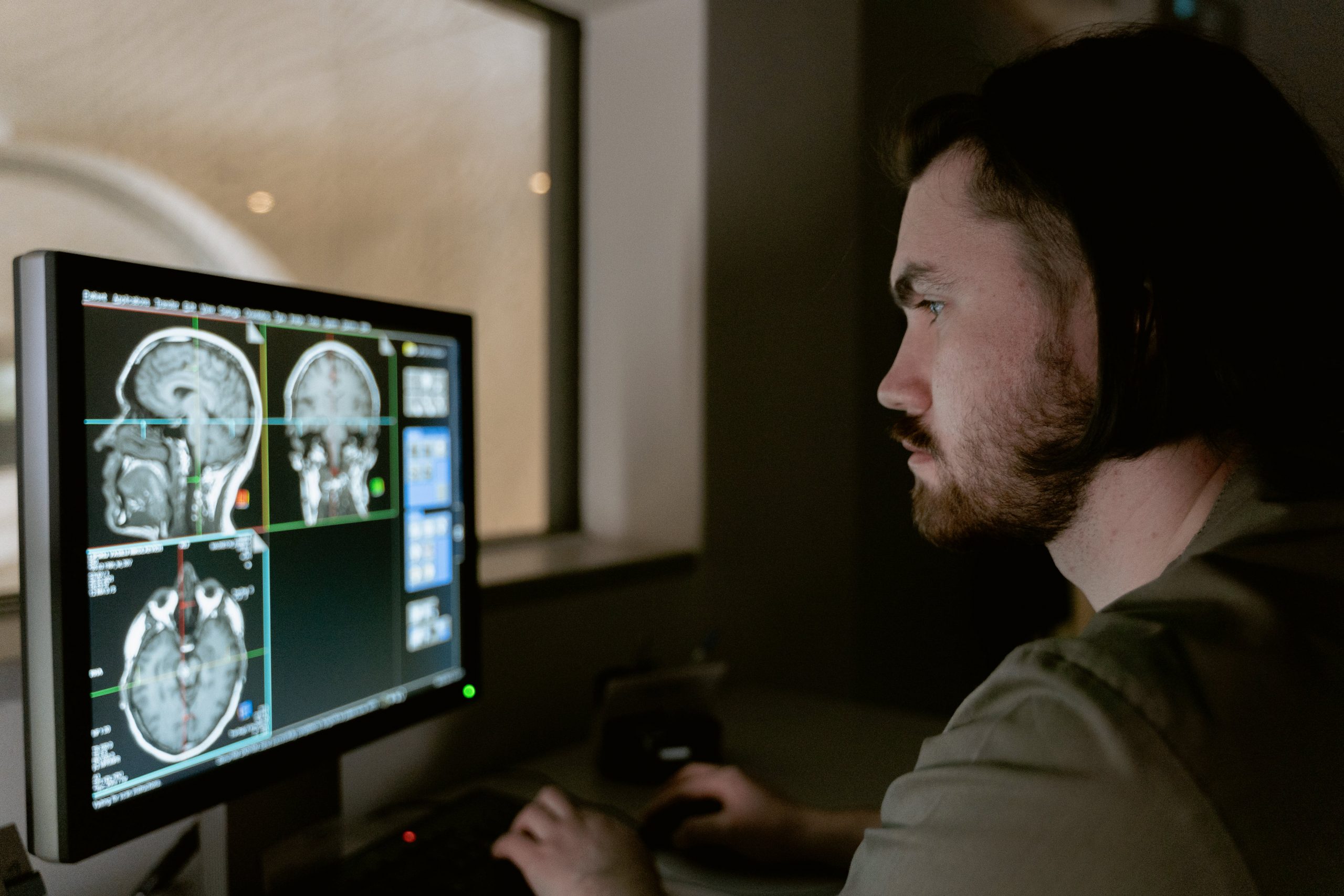Whether medical providers need to understand why you’re having persistent headaches or quickly evaluate you for a stroke or traumatic brain injury in the emergency department, they’re likely to order a scan of your head using computed tomography. What does a head CT scan show? It reveals details about your brain, skull, blood vessels, soft tissues, and other structures, which makes this imaging technique incredibly versatile and invaluable for diagnosis.
What Happens During a Head CT Scan?
A type of X-ray, a CT scan takes detailed images that, when combined, create a 3D image of the internal structures of the head. Some scans use contrast material to help blood vessels and tissues stand out from surrounding structures for better visibility. For some people, IV contrast dyes can cause an allergic reaction or affect kidney function, especially for those with kidney disease. Be sure to tell your imaging team if you have kidney problems.
If you receive a contrast injection prior to your scan, you may experience a warm feeling throughout your body or a metallic taste in your mouth. Both will fade shortly. The scan itself produces more radiation exposure than a typical X-ray, but the risk of health problems from a single head CT scan is extremely low.
As you lie on your back on the exam table, it will move into the cylindrical CT unit. The X-ray beams and detectors will move around your head, creating image slices.
Faster and, in some cases, able to show abnormal structures more clearly than an MRI, a CT scan is often physicians’ imaging method of choice for diagnosing and evaluating conditions of the head. Let’s explore eight conditions a head CT scan helps find and assess.
Read More: What is a Low Dose CT Lung Cancer Screening?
Brain Aneurysm
When a brain aneurysm — a bulge in a weak portion of an artery — presses against neighboring nerves or tissues, it can cause vision changes, pain around the eyes, and other symptoms. Worse, if the aneurysm bursts, a severe headache and cardiac arrest may occur. A head CT scan can show blood on the brain, which may be a sign of a ruptured aneurysm. CT angiography, a type of CT scan with contrast, can help radiologists locate an aneurysm by showing how blood moves through the brain’s arteries.
Hemorrhage
Head injuries, aneurysms, brain tumors, and other causes can lead to brain hemorrhages, which are also known as brain bleeds. To quickly diagnose a hemorrhage, a physician may order a head CT scan without contrast. This scan can show bleeding between the skull and brain tissue and inside the tissue itself.
Stroke
When stroke-like symptoms occur, time is of the essence. Physicians need to quickly confirm the presence of a stroke and its cause — either a blockage in an artery or a brain bleed — which will guide treatment. In these emergency situations, a head CT scan can quickly show blood on the brain or stroke-related damage, allowing physicians to choose the most appropriate therapy.
Traumatic Brain Injury
With a traumatic brain injury, the brain experiences damage from a blow to or violent jolt of the head, or an object penetrating the brain tissue. As a result, you may experience headaches, sensory and cognitive changes, and many other symptoms. As part of the diagnostic process, your physician may order a head CT scan, which can show physical damage to the brain.
Skull Fracture
A type of traumatic brain injury, a skull fracture can lead to other problems, such as a hemorrhage. Using a head CT scan, a physician can determine the location, severity, and type of skull fracture. That information, in turn, helps guide treatment decisions.
Tumors and Lesions
Severe headaches, seizures, and vision changes are just some of the symptoms that may point to a brain tumor, a type of lesion (damaged or abnormal tissue). Imaging scans are crucial in confirming the diagnosis. Although MRI is often the first-choice imaging method for diagnosing brain tumors, a head CT scan can also play an important role. A CT scan can help determine the size of a tumor, and it may be a good option for patients who have an implanted medical device and can’t have an MRI.
Dementia
Dementia — the gradual loss of memory and thinking abilities — can have a variety of causes. Pinpointing these causes is one way a head CT scan can help with diagnosing dementia. This scan can reveal tumors and strokes, both of which may lead to dementia. In addition, a head CT scan can show changes in certain parts of the brain that may indicate a person has dementia.







